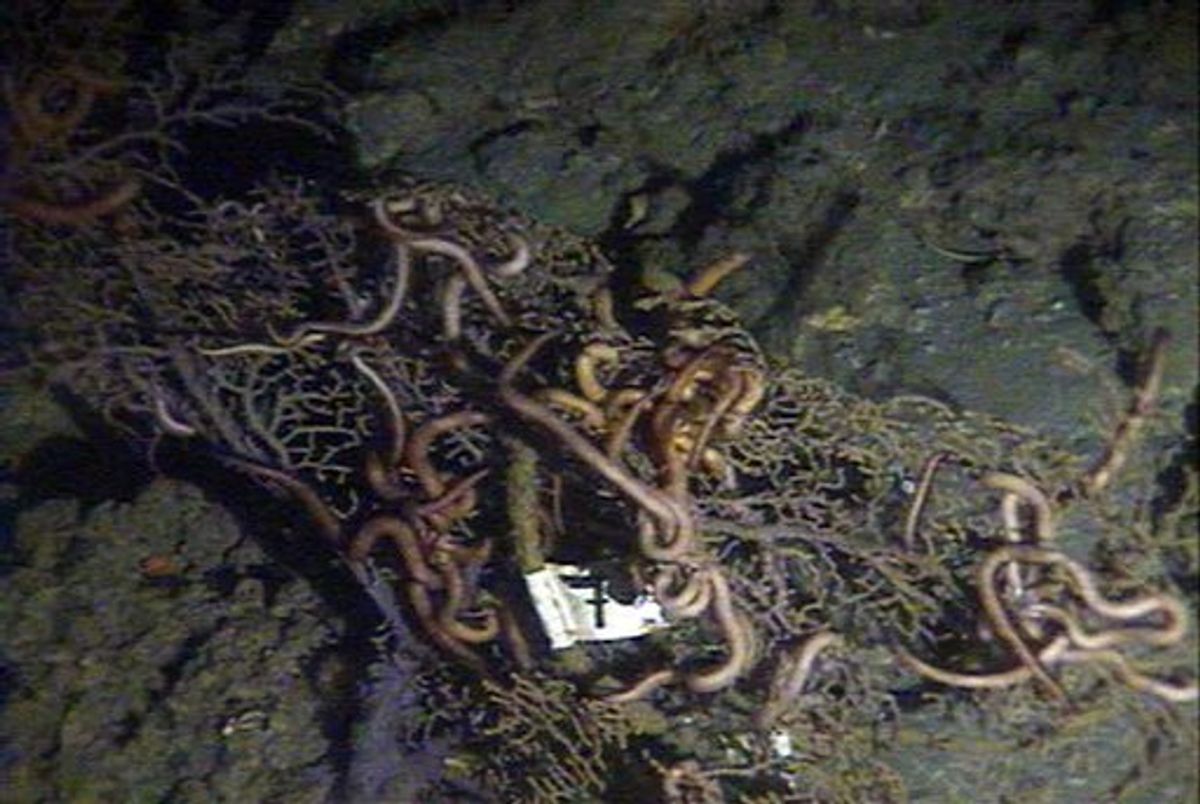Oil from the BP spill remains stuck on the bottom of the Gulf of Mexico, according to a top scientist's video and slides that she says demonstrate the oil isn't degrading as hoped and has decimated life on parts of the sea floor.
That report is at odds with a recent report by the BP spill compensation czar that said nearly all will be well by 2012.
At a science conference in Washington Saturday, marine scientist Samantha Joye of the University of Georgia aired early results of her December submarine dives around the BP spill site. She went to places she had visited in the summer and expected the oil and residue from oil-munching microbes would be gone by then. It wasn't.
"There's some sort of a bottleneck we have yet to identify for why this stuff doesn't seem to be degrading," Joye told the American Association for the Advancement of Science annual conference in Washington. Her research and those of her colleagues contrasts with other studies that show a more optimistic outlook about the health of the gulf, saying microbes did great work munching the oil.
"Magic microbes consumed maybe 10 percent of the total discharge, the rest of it we don't know," Joye said, later adding: "there's a lot of it out there."
The head of the agency in charge of the health of the Gulf said Saturday that she thought that "most of the oil is gone." And a Department of Energy scientist, doing research with a grant from BP from before the spill, said his examination of oil plumes in the water column show that microbes have done a "fairly fast" job of eating the oil. Lawrence Berkeley National Lab scientist Terry Hazen said his research differs from Joye's because they looked at different places at different times.
Joye's research was more widespread, but has been slower in being published in scientific literature.
In five different expeditions, the last one in December, Joye and colleagues took 250 cores of the sea floor and travelled across 2,600 square miles. Some of the locations she had been studying before the oil spill on April 20 and said there was a noticeable change. Much of the oil she found on the sea floor -- and in the water column -- was chemically fingerprinted, proving it comes from the BP spill. Joye is still waiting for results to show other oil samples she tested are from BP's Macondo well.
She also showed pictures of oil-choked bottom-dwelling creatures. They included dead crabs and brittle stars -- starfish like critters that are normally bright orange and tightly wrapped around coral. These brittle stars were pale, loose and dead. She also saw tube worms so full of oil they suffocated.
"This is Macondo oil on the bottom," Joye said as she showed slides. "This is dead organisms because of oil being deposited on their heads."
Joye said her research shows that the burning of oil left soot on the sea floor, which still had petroleum products. And even more troublesome was the tremendous amount of methane from the BP well that mixed into the Gulf and was mostly ignored by other researchers.
Joye and three colleagues last week published a study in Nature Geoscience that said the amount of gas injected into the Gulf was the equivalent of between 1.5 and 3 million barrels of oil.
"The gas is an important part of understanding what happened," said Ian MacDonald of Florida State University.
National Oceanic and Atmospheric Administration chief Jane Lubchenco told reporters Saturday that "it's not a contradiction to say that although most of the oil is gone, there still remains oil out there."
Earlier this month, Kenneth Feinberg, the government's oil compensation fund czar, said based on research he commissioned he figured the Gulf of Mexico would almost fully recover by 2012 -- something Joye and Lubchenco said isn't right.
"I've been to the bottom. I've seen what it looks like with my own eyes. It's not going to be fine by 2012," Joye told The Associated Press. "You see what the bottom looks like, you have a different opinion."
NOAA chief Lubchenco said "even though the oil degraded relatively rapidly and is now mostly but not all gone, damage done to a variety of species may not become obvious for years to come."
Lubchenco Saturday also announced the start of a Gulf restoration planning process to get the Gulf back to the condition it was on Apr. 19, the day before the spill. That program would eventually be paid for BP and other parties deemed responsible for the spill. This would be separate from an already begun restoration program that would improve all aspects of the Gulf, not just the oil spill, but has not been funded by the government yet, she said.
The new program, which is part of the Natural Resources Damage Assessment program, is part of the oil spill litigation -- or out-of-court settlement -- in which the polluters pay for overall damage to the ecosystem and efforts to return it to normal. This is different than paying compensation to people and businesses directly damaged by the spill.
The process will begin with public meetings all over the region.



Shares